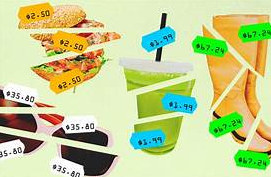Uptake of BNPL loans is slowing down, but retailers and credit cards are just getting started offering their own riffs on the services.
Consumers are increasingly being asked, “Why pay all at once?” as installment plans, similar to the popular “buy now, pay later” (BNPL) services, appear more frequently at checkouts. BNPL services like Afterpay, Affirm, Sezzle, and Klarna gained significant traction during the pandemic, driven by e-commerce growth, government stimulus checks, and increased savings. These services allow consumers to split purchases into smaller payments, often with minimal or no interest.
Although BNPL’s growth has slowed recently, its influence on how consumers manage borrowed money is far from over. Retailers and credit card companies are now offering their own versions of installment plans, incorporating BNPL features into traditional credit systems. As a result, installment payments are becoming a more standard offering for consumers, particularly those who are financially stretched or looking for greater flexibility.
The initial surge of BNPL services, which was most pronounced during lockdowns, allowed many consumers to spread out their payments without feeling the immediate financial burden. This was especially attractive during a time of uncertainty when many people had extra cash from government support. However, as the world has returned to normalcy, adoption has slowed. Despite this, the underlying model has been embraced by various industries, adapting to credit cards, traditional loans, and other financial tools.
While BNPL is designed to help consumers manage large or unexpected purchases, it’s not without its risks. Some experts warn about the potential for rising debt levels, as people may overextend themselves with repeated installment purchases. Additionally, if consumers miss payments, they could face steep fees, hurting their credit scores and overall financial health.
In response to these concerns, some companies are introducing more structured approaches, including credit checks, and offering tools to help users manage their payments more effectively. Yet, the ease of access and flexibility of installment plans continue to make them an attractive option for many.
Experts point out that while BNPL and similar services can help ease the burden of large purchases, it’s important for consumers to understand the terms and the long-term implications of borrowing. The growing presence of these installment-based offerings, both from traditional financial institutions and new-age services, signals a shift in the way people approach money management.
The future of BNPL remains uncertain as companies adapt to changing consumer habits and increasing regulatory scrutiny. However, one thing is clear: the “buy now, pay later” model, whether from a fintech startup or a credit card company, is likely to be a permanent fixture in the consumer financial landscape.

